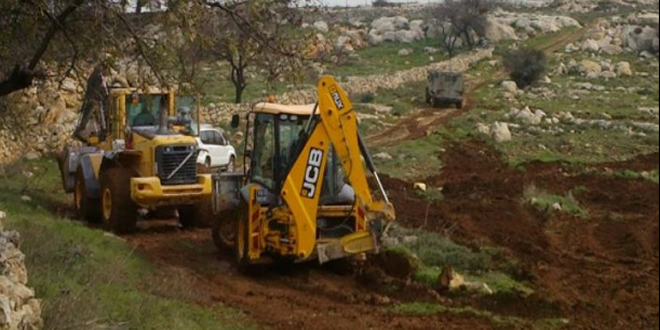New Israeli settlement units undermine the establishment of a geographically connected Palestinian state
The Israeli occupation announced its intention to establish 9409 new settlement units to expand settlements established in the West Bank, which threatens to seize more strategic and vital Palestinian lands in the vicinity of occupied Al-Quds (Jerusalem), Ramallah, the Jordan Valley, the mountains overlooking them and the areas leading to them, and the areas south of Hebron and south of Nablus. This is considered the worst and most extensive gradual annexation process to the West Bank.
The Palestinian Ministry of Foreign Affairs condemned the new occupation plan, stressing that it represents a disregard for the decisions of international legitimacy. The international community’s failure to take any practical measures to stop settlement activity confirms its involvement in undermining the chances of establishing a geographically connected Palestinian state.
In a statement to SANA reporter, Khalil al-Tafakji, the general director of the Maps Department at the Orient House in occupied Al-Quds, said: The 9,409 units announced by the occupation are part of a three-stage plan, the first of which is the establishment of geographically connected settlements in the vicinity of Al-Quds . The existing settlements will be expanded through the establishment of thousands of settlement units linking it, and seizing all the lands in its vicinity, especially in the villages of Al-Khan Al-Ahmar, Abu Al-Nawwar, and Al-Sawahra area, in conjunction with continuing to establish more settlement units in the villages surrounding Ramallah, with the aim of fragmenting the Palestinian geography.
Tafakji indicated that the second phase, which is the most dangerous, is the process of removing the June 4, 1967 line in Al-Khalil (Hebron), in the south of the West Bank, by expanding settlements in this area and linking them to the occupied Palestinian territories in 1948, and this is the essence and basis of the gradual annexation process. The third phase includes the establishment of more settlements in the Jordan Valley and displacing the Palestinians from it with the aim of undermining the chances of establishing a Palestinian state, since the Jordan Valley constitutes a third of the area of the West Bank and is considered the Palestinians’ gateway to the outside world.
Head of the People’s Committee Against the Wall and Settlements, Salah Al-Khawaja, noted that these plans aim to perpetuate Judaization and settlement, and to convert 60 settlement outposts built in the West Bank into settlements within a year and a half, leading to an increase in the number of settlers in the West Bank by 2025 to one million settlers. He pointed out that the occupation’s current policy is the displacement of the Palestinians, the consolidation of the apartheid regime, and the replacement of settlers in their place. Since the beginning of the year, plans have been drawn up to establish about 15,000 settlement units.
For his part, Secretary-General of the Palestinian National Initiative, Mustafa Barghouti, indicated that the settlement intensification comes in the context of the open war waged by the occupation against the Palestinian people in full view of the international community. He stressed that the Palestinian people will continue steadfastness, struggle and resistance and will not submit to the occupation and the apartheid regime. He clarified that double standards pursued by some international parties will only increase the Palestinian people’s insistence on steadfastness to regain their rights.
In turn, a member of the Political Bureau of the Democratic Front for the Liberation of Palestine, Talal Abu Zarifa, affirmed that the Palestinian people have no choice but to continue the resistance to thwart the occupation’s plans. He called on the international community to assume its responsibilities and work to hold the occupation accountable for its crimes through real measures and not be satisfied with useless statements.
Inas Abdulkareem

